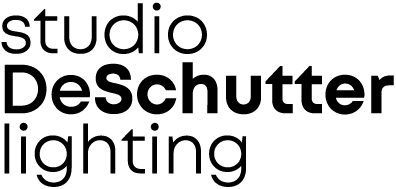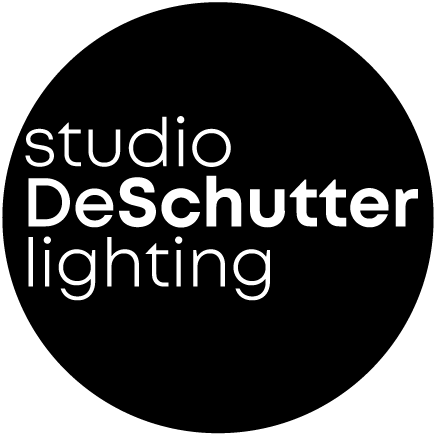Burg Vischering
Museum Lighting · Lüdinghausen
Project type: Museum Lighting, temporary and permanent exhibition
Realised: 2018 / Lüdinghausen
Project size: 2000 sqm
Client: Kreis Coesfeld
Architects and designers: DuncanMcCauley & Polyform; Pfeiffer-Ellermann-Preckel Architekten
Photos: Philipp Oberkircher and Studio De Schutter
Burg Vischering is one of the oldest and best-preserved castles in Münsterland, Germany. The castle was built in the second half of the 13th Century and became the seat of the Droste zu Vischering Family.
In February 2018, after a year and a half of refurbishment and renovation, Burg Vischering once again opened its doors. The overall concept of the exhibition designer, Duncan McCauley was to show the castle as the main exhibit. Together, we designed the lighting for both the permanent and the temporary exhibition.
Our aim was to create a lighting scheme that is only experienced through the atmosphere and not through visible lighting fixtures. The many custom-made fixtures combine the newest technology whilst blending in with the historical architecture. This is except for the Knight’s Hall, where the chandeliers are eye-catching and are part of the dynamic lighting that tells the story of the festivities that took place in this magnificent space.
For the knighthoodshall, we designed a variable lighting setting and two bespoke, DMX controllable chandeliers. Their classic look houses state-of-the-art LED technology, enabling the visitors to start with an in-depth experience of the story of this site.
To guide the guests through the museum spaces, we worked with different levels of illumination. The indirect lighting gives a soft and warm effect to the entire space. At the same time, the lighting levels were kept low to allow certain elements to pop out. Like this, we could not only create a play between light and dark but also prevent exhibits, like this painting (right), from over-illumination.
Light is much more than a tool that makes us see, it shapes space and creates atmosphere.
In this museum lighting concept, the direct and aimable spotlights accentuate the exhibits, whereas the indirect lighting brings out the reflective materiality of the display cabinets.
The lighting design takes viewing ergonomics, conservation guidelines, and the visitor's experience into account.
At museum Burg Vischering we designed the lighting for this kitchen / workshops space. Working in this listed monument we wanted to create a minimal, yet classic lighting solution that integrates itself in the architecture. For us, lighting is all about atmosphere, highlighting architecture and guiding through space. We, therefore, selected lighting fixtures that are subtle and minimal in look. Working with a “lighting family” as we like to call it, we could cover the different visual needs with this series of fixtures.
Lighting is a visual cue that is often underestimated or forgotten. With our design we do not only aim for appropriate light levels, we aim to shape stories and create experiences.
For some details, you need to fight, because they just make the design.
Here is an example of how we refused to have those big, often handwritten, indication stickers for emergency lighting. For this listed building we designed a much more subtle option. Check out our custom-made emergency lighting stickers!
Placed on the beams between the vaults, the spots can both highlight the architectural vaults and the exhibits. The lighting solution is flexible, aimable and dimmable to support the changing exhibition.
In addition, these spots are also part of the emergency lighting for that sleek and integrated look we love.
Deutsch - Im Februar 2018 öffnete die Burg Vischering nach eineinhalbjähriger Sanierung und Renovierung wieder ihre Pforten. Das Gesamtkonzept des Ausstellungsdesigners Duncan McCauley sah vor, die Burg als Hauptexponat zu zeigen. Gemeinsam entwarfen wir die Beleuchtung sowohl für die Dauerausstellung als auch für die Wechselausstellung.
Unser Ziel war es, eine Beleuchtung zu schaffen, die rein durch Lichtatmosphäre und ohne sichtbare Beleuchtungskörper wahrgenommen wird. Die vielen maßgefertigten Leuchten kombinieren die neueste LED-Technologie und fügen sich gleichzeitig in die historische Architektur ein. Eine Ausnahme bildet der Rittersaal, wo die neu konzipierten Kronleuchter, auf Basis historischer Bilder entworfen wurden, gezielt Hingucker sind. Die LED-Kronleuchter aus Glas sind Teil der dynamischen, DMX-gesteuerten Medieninstallation, die die Geschichte der Festlichkeiten erzählt.
Um die Besucher durch die Museumsräume zu führen, haben wir verschiedene Beleuchtungsniveaus geplant. Die indirekte Grundbeleuchtung verleiht den Räumen eine weiche und warme Wirkung. Die Grundbeleuchtung ist mit Absicht sehr niedrig gehalten, um auf den Exponaten gezielt Akzente setzen zu können. Das Beleuchtungskonzept baut eine visuelle Hierarchie auf, die den Besucher durch die Ausstellung leitet.
In dieser denkmalgeschützten Burg wollten wir eine minimale, aber klassische Beleuchtungslösung schaffen, die sich in die Architektur einfügt. Für uns, Studio De Schutter, geht es bei der Lichtplanung vor allem um Atmosphäre, die Betonung der Architektur und die Besucherführung durch den Raum. Deshalb haben wir Beleuchtungskörper ausgewählt, die subtil und minimalistisch aussehen. Durch die Arbeit mit einer "Beleuchtungsfamilie", konnten wir die verschiedenen visuellen Bedürfnisse mit einer zusammengestellte Serie von Leuchten abdecken.













